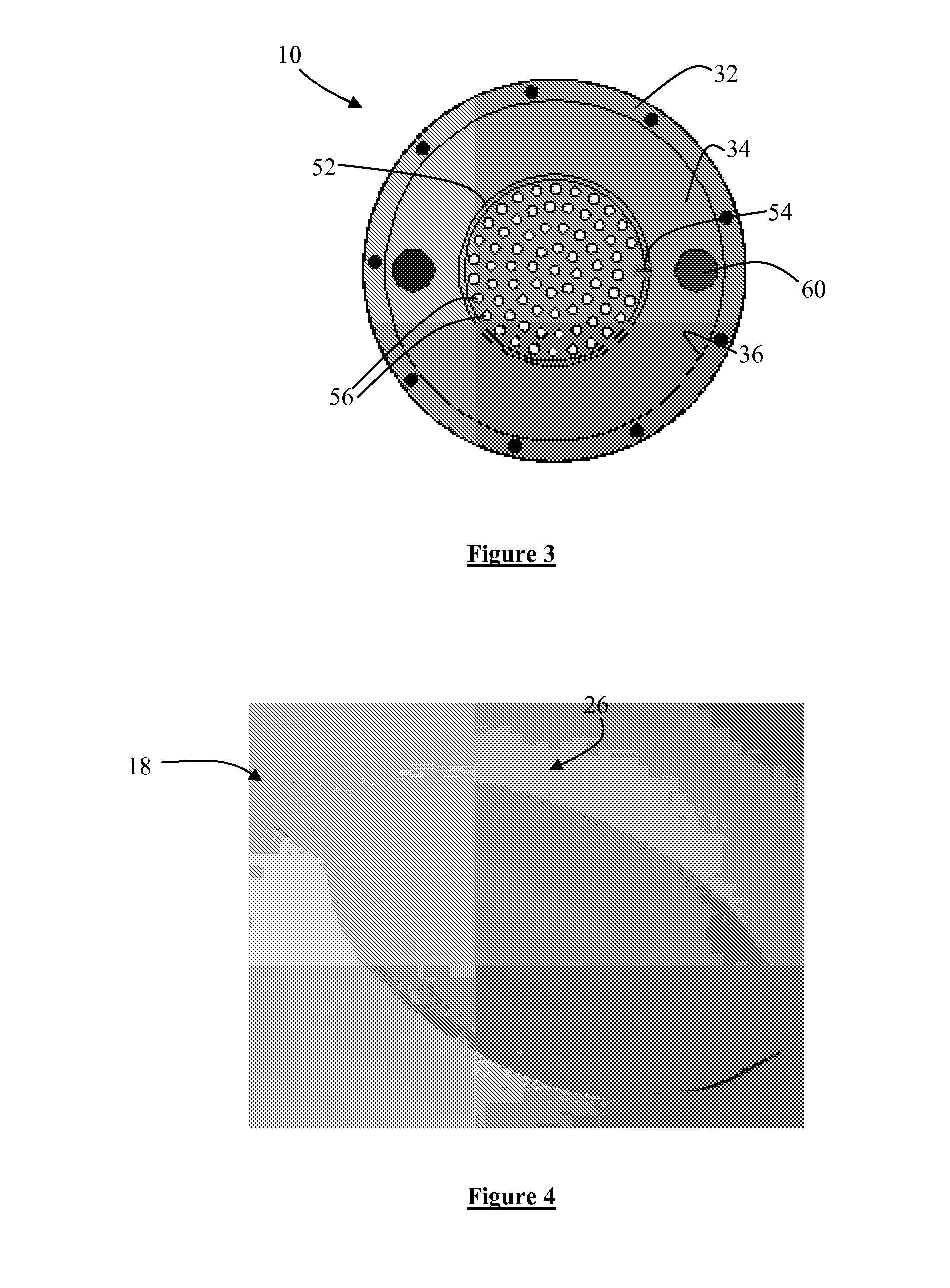Deformable phantom apparatus
a phantom apparatus and phantom technology, applied in the field of phantom apparatus, can solve the problems of not imparting a physiologically correct movement of the organs during breathing, prone to errors and inaccuracy, and the dose to be received by the patient is estimated, so as to reduce the difficulty and disadvantages, accurately and reproducibly simulate
- Summary
- Abstract
- Description
- Claims
- Application Information
AI Technical Summary
Benefits of technology
Problems solved by technology
Method used
Image
Examples
Embodiment Construction
[0057]Referring initially to FIGS. 1 to 3, there is illustrated a deformable phantom apparatus 10 for simulating motion of a patient's anatomy in 3D during breathing. In a broad aspect, the deformable phantom apparatus 10 comprises a chamber 12 fillable with a first fluid 14, a deformable member 16 comprising tissue equivalent material of the anatomy being simulated, the deformable member 16 being positionable within the chamber 12 in the first fluid 14 and having an open end 18 (FIG. 4) in fluid communication with a second fluid 20 outside the chamber 12 in use; and a mechanism for causing the second fluid 20 to flow through the open end 18 to deform the deformable member 16 between a normal state and a deformed (extended or inflated) state to simulate anatomical motion during breathing.
[0058]In a preferred embodiment described below, the first fluid 14 is water and the second fluid 20 is air such that the chamber 12 is filled with water and the deformable member 16 is in fluid com...
PUM
 Login to View More
Login to View More Abstract
Description
Claims
Application Information
 Login to View More
Login to View More - R&D
- Intellectual Property
- Life Sciences
- Materials
- Tech Scout
- Unparalleled Data Quality
- Higher Quality Content
- 60% Fewer Hallucinations
Browse by: Latest US Patents, China's latest patents, Technical Efficacy Thesaurus, Application Domain, Technology Topic, Popular Technical Reports.
© 2025 PatSnap. All rights reserved.Legal|Privacy policy|Modern Slavery Act Transparency Statement|Sitemap|About US| Contact US: help@patsnap.com



